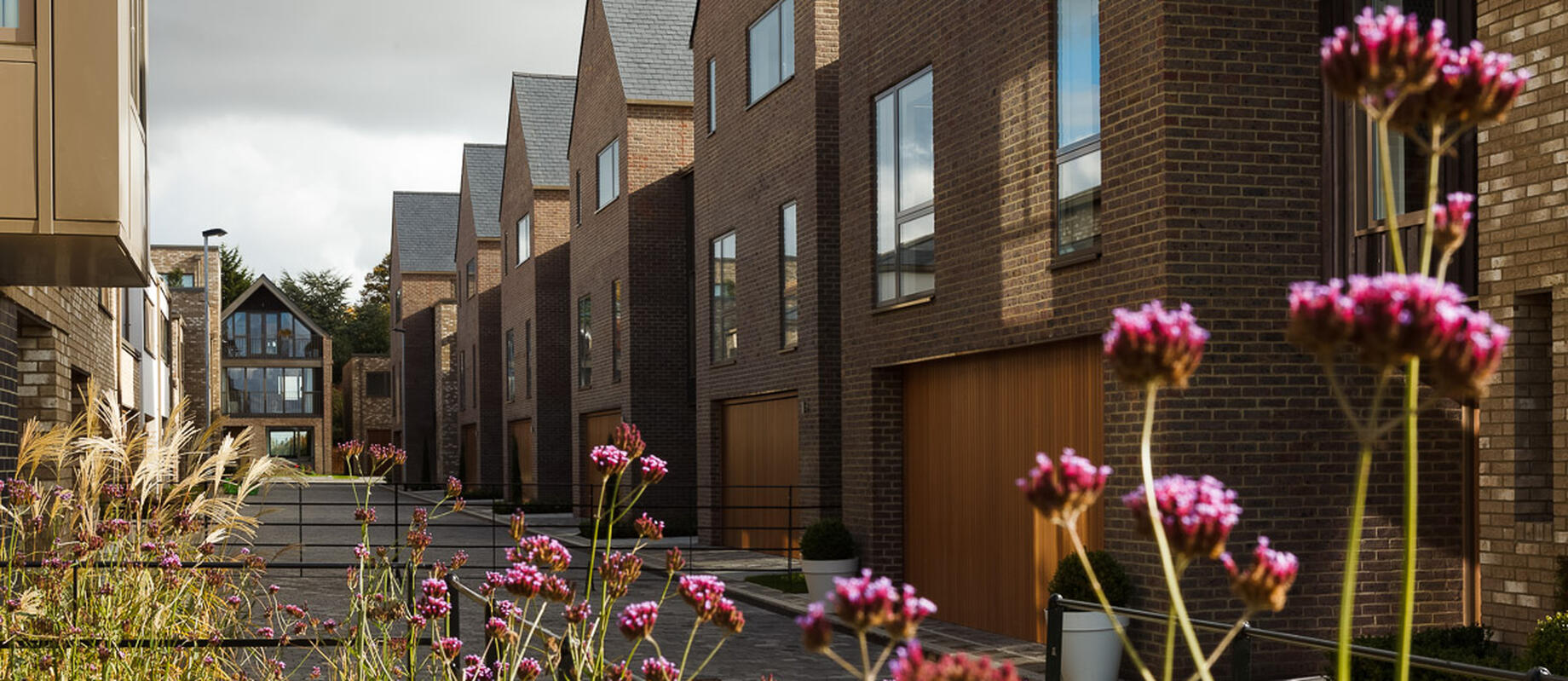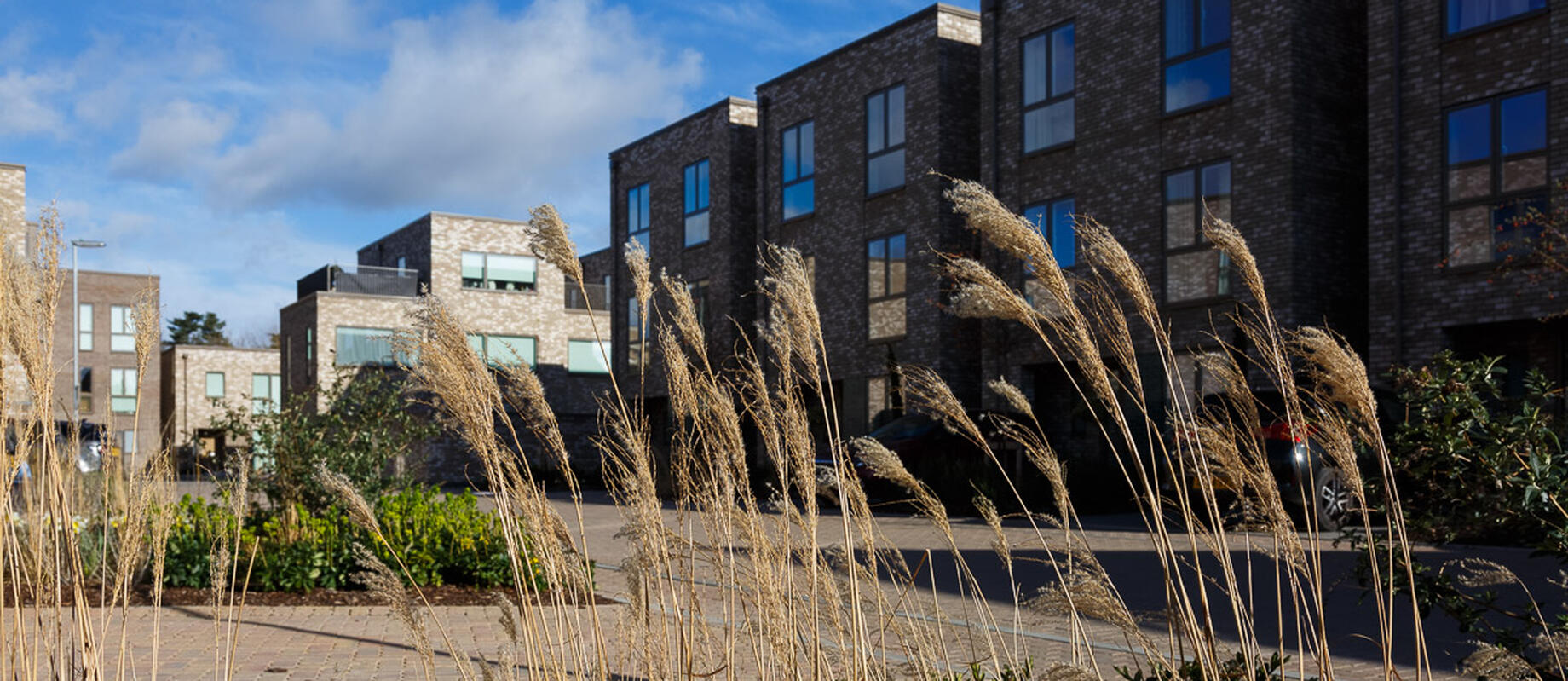According to the WWF, on a single summer’s day, one acre of wildflower meadow can support nearly 96,000 honey bees. But the benefits of these biodiverse spaces needn’t be reserved to vast, open fields. Smaller plots, nestled in urban areas, can hold a lot of flower power for insects, animals and residents alike.
From small housing developments to sprawling garden villages, we’re seeing more and more communities introducing these wildlife-rich spaces wherever they can. And there’s proving to be a lot of benefits along the way.
Wildflowers can play a vital role in boosting biodiversity in urban areas. A wide variety of wildflowers can, in turn, support a wide variety of pollinators - providing food for bees, butterflies, moths and more. Those insects then attract other animals for whom they’re a food source, and can even help to reduce numbers of pests such as aphids.
Supporting the environment is also something that matters deeply to many of the residents on developments we look after. People want to be a part of a community that takes care of the world we live in. Actively being able to see wildflower habitats thriving, on their doorstep, can boost residents’ happiness and satisfaction with where they live.
Access to green spaces and planting, including these wildflower-rich areas, has well-documented positive effects on our wellbeing. So, it’s not just the bees that are buzzing about wildflower planting becoming a staple of developments - communities are feeling the wellbeing benefits too.

We’ve helped developers to map out wildflower planting before the first homes have even been built. And we’ve helped residents to choose areas amongst existing green spaces where wildflowers could thrive. There are so many different ways wildflowers can be incorporated. Here are some examples:
Special woodland wildflower mixes can help to boost the biodiversity of wooded areas. Wildflowers can occupy spaces that would otherwise be left bare and soften the edges of woodland spaces.
Whether it’s undulations in green spaces, the banks of sustainable drainage systems (SUDs) or between trees dotted along pathways - all of these spaces can be tricky to maintain as the spaces are difficult to access by people and machinery (such as mowers). Frequent maintenance can be time-consuming (and costly), so wildflowers provide a pleasant and environmentally-friendly alternative, as they don’t need mowing as frequently as lawn, for example.
Wildflower planting in urban developments will often thrive alongside pathways. That gives residents an opportunity to feel immersed in the biodiverse habitats - adding to the wellbeing benefits.
We’ve seen wildflower planting used to great effect surrounding green spaces that do need to be more formally cut grass. For example, at the edges of a cricket pitch wildflowers thrive among plane trees at a development we look after. The planting softens the open space, and adds interest.
Wildflowers and long grasses can also be used as a temporary solution in spaces where more formal planting is due to be arranged at a later stage of a development. Wildflowers support the soils they grow in, and can help to minimise waterlogging and soil erosion due to rainfall. Allowing grasses and wildflowers to grow can help to improve the soil, supporting future landscaping.
Although wildflower planting can be a lower-maintenance option than clipped lawn, for example, it does still need some expert management to make sure it thrives - especially on larger scales, for example within a garden village.
Our team of experts start the cycle of wildflower planning in late winter - often in February.
We’ll look at the planting and maintenance that’s needed for a development over the coming year. However, if it’s the first time wildflowers are being planted at an estate, the process can start much, much sooner - with trials of wildflowers taking place and consultation with expert contractors, to make sure the right mix is chosen.
Ahead of Spring we’ll look to establish where may need re-seeding, whether the existing mix of wildflowers is thriving and if any new areas need to be incorporated into the maintenance schedule.
Depending on whether the wildflower planting is new or established, we’ll make sure a carefully-managed mowing and maintenance plan is in place for the year. In some cases this may include a mid-season mow, but for the vast majority it’s vital that the wildflower meadow is left uncut until late Summer or early Autumn.
This allows a longer bloom for the wildflowers, which benefits more insects. It’s also recommended to avoid cutting back habitats whilst animals are still making them home.
The Encore team will visit the development in August to establish how the wildflower planting did over the year - and to see where improvements could be made. At this point, many of the wildflowers may have produced seed heads in place of their flowers. Some may feel this looks like uncut grass - but it’s important these seed heads are left for some time so the seeds can drop, and make contact with the soil. It creates the start of next year’s wildflower planting.
For the same effect, after the Autumn mow, the cutting may be left for some days on the ground - this allows more seeds to fall. With the seeds on the soil and the dead wildflowers cut back, the cycle is ready to start again.
To make all of this possible, we’re careful in appointing the right contractor to deliver the wildflower maintenance. Where wildflower planting is a big part of a scheme, we’ve even worked with ‘wildflower qualified’ contractor[YC1] [DJ2] [lo3] [YC4] s to make sure we have the expertise on-the-ground to keep wildflower planting flourishing year on year.

We’ve covered the many rich ways wildflowers can benefit developments - but another surprising plus of wildflower planting is that it can also be a wise use of service charge money. Where residents all pay a service charge for the maintenance of communal amenities, including green spaces, wildflower planting can make much better use of their money in place of formal planting, for example. As we’ve outlined, although careful management is needed of wildflower planting - with timing key, it doesn’t need enriched soil, frequent deadheading or replanting. All of which have a cost associated with them.
With the many ways wildflower planting can be used, and its benefits stretching from increased biodiversity to making good use of community funds, it’s clear why it’s becoming a more popular choice for developments across the country. With Spring on our doorstep right now, we’re excited to soon see the wildflower planting blooming and insects buzzing at many of the estates we look after.